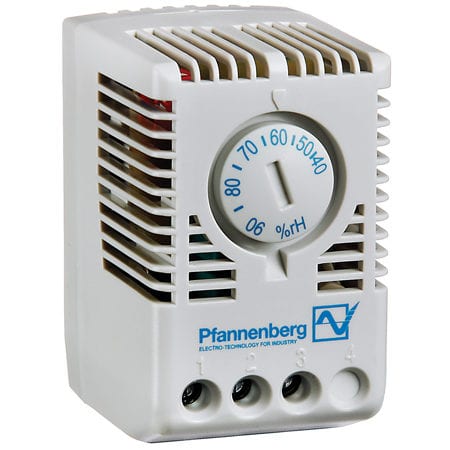How to handle condensation issues inside your enclosure and how to lower humidity inside enclosures
Condensation within electrical enclosures can present risks to the functionality and lifespan of the equipment within the enclosure. As warm, moist air is introduced into the enclosure and comes into contact with cooler surfaces, condensation forms, resulting in the build-up of moisture.
The most important initial step is to ensure that the enclosure is sealed properly. If left open to the surrounding environment, it can lead to the ingress of humidity, raising the risk of condensation forming inside. Avoid using open loop cooling methods like filterfans and exhaust filters in humid conditions, as these can allow humidity to get into the enclosure. Instead, closed loop solutions such as an AC unit can keep the ambient air separated from the electrical enclosure. Continuously opening the doors of the enclosure introduces unconditioned air, making it harder to eliminate excess humidity once it enters the cabinet.
When utilizing AC units, it's crucial to cool the electrical enclosure to the designed temperature rather than setting it lower unnecessarily. If the AC units are adjusted to a colder temperature than they were designed for, they will run more frequently and for longer durations, leading to condensation issues. Make sure your AC unit includes a condensate evaporate tray to eliminate any collected moisture, reducing the risk of condensation being reintroduced inside the enclosure. Properly functioning AC units should help dehumidify the enclosure as long as they are not excessively cooling to a very low temperature.
Hydrostat Solution Another effective solution involves using a hygrostat in combination with a heater. A hygrostat is a device that regulates the humidity levels within an enclosed space. Similar to a thermostat but operates on humidity control rather than temperature, the hygrostat ensures that the relative humidity remains below where condensation can form inside the enclosure. When the hygrostat detects an increase in humidity above the setpoint, it activates the heater to lower the humidity within the enclosure. It's important to note that while this method doesn't eliminate existing humidity, it effectively maintains it below a specific threshold to prevent condensation.
Another effective solution involves using a hygrostat in combination with a heater. A hygrostat is a device that regulates the humidity levels within an enclosed space. Similar to a thermostat but operates on humidity control rather than temperature, the hygrostat ensures that the relative humidity remains below where condensation can form inside the enclosure. When the hygrostat detects an increase in humidity above the setpoint, it activates the heater to lower the humidity within the enclosure. It's important to note that while this method doesn't eliminate existing humidity, it effectively maintains it below a specific threshold to prevent condensation.
Thermostat Solution
An alternative solution involves utilizing a normally closed thermostat in combination with a heater. This setup is designed to maintain the enclosure at a specific temperature, with the thermostat set to the dew point temperature. The dew point temperature is the point at which air reaches saturation with moisture, leading to the condensation of water vapor into liquid form (commonly known as condensation). By using the dew point temperature, which directly reflects the moisture content in the air, you can decrease the likelihood of condensation forming.
Higher dew points indicate higher moisture levels, while lower dew points suggest drier air. If the air temperature reaches the dew point, it has the potential to create condensation (similar to dew forming on grass in the morning due to lower temperatures). In most situations where dew point temperatures are unknown, a range between 50-60°F can be used, especially in controlled temperature environments. If you wish to go deeper into dew point temperatures, this weblink provides some good information. Psychrometric Chart Use (psu.edu).
